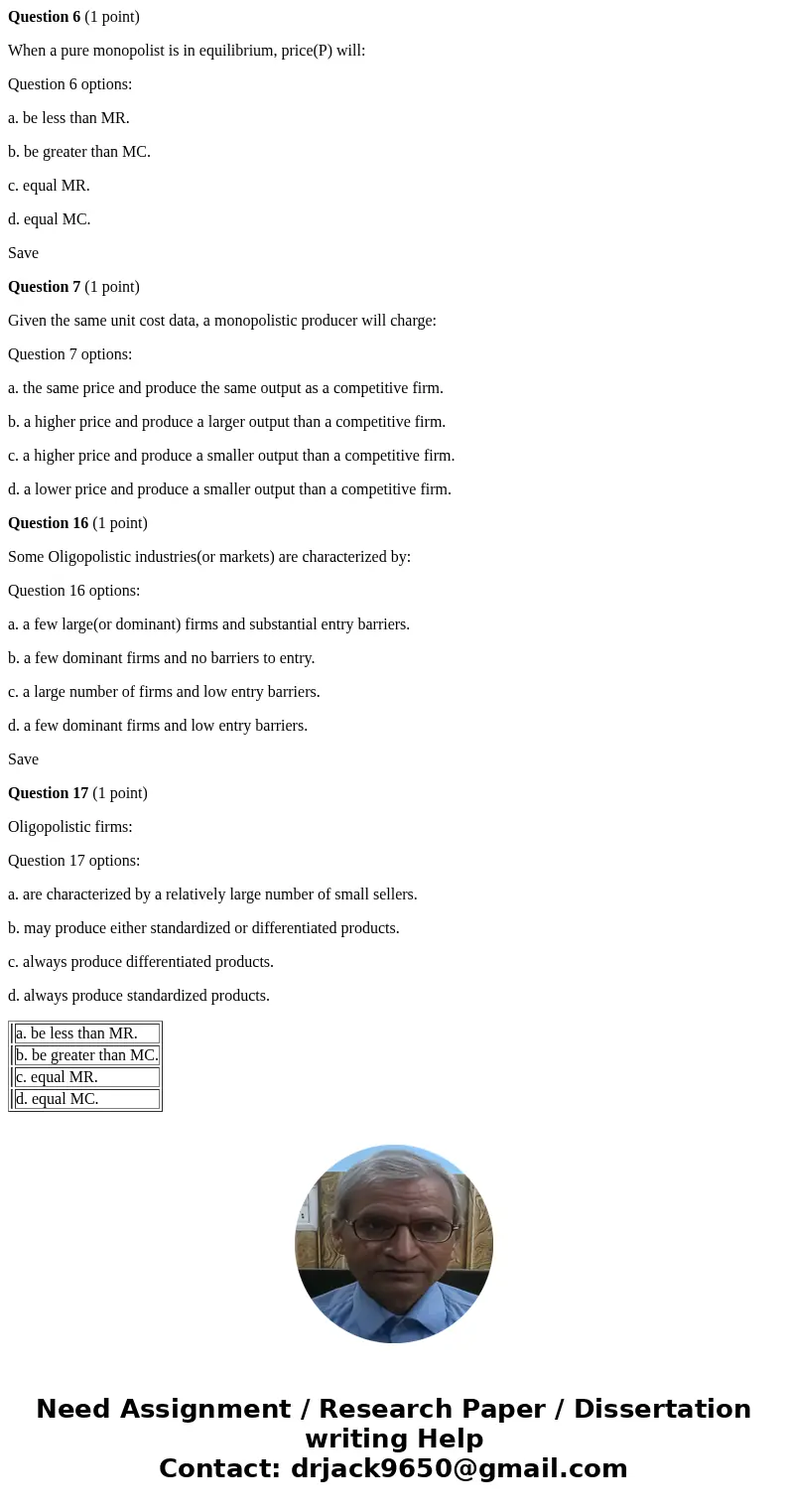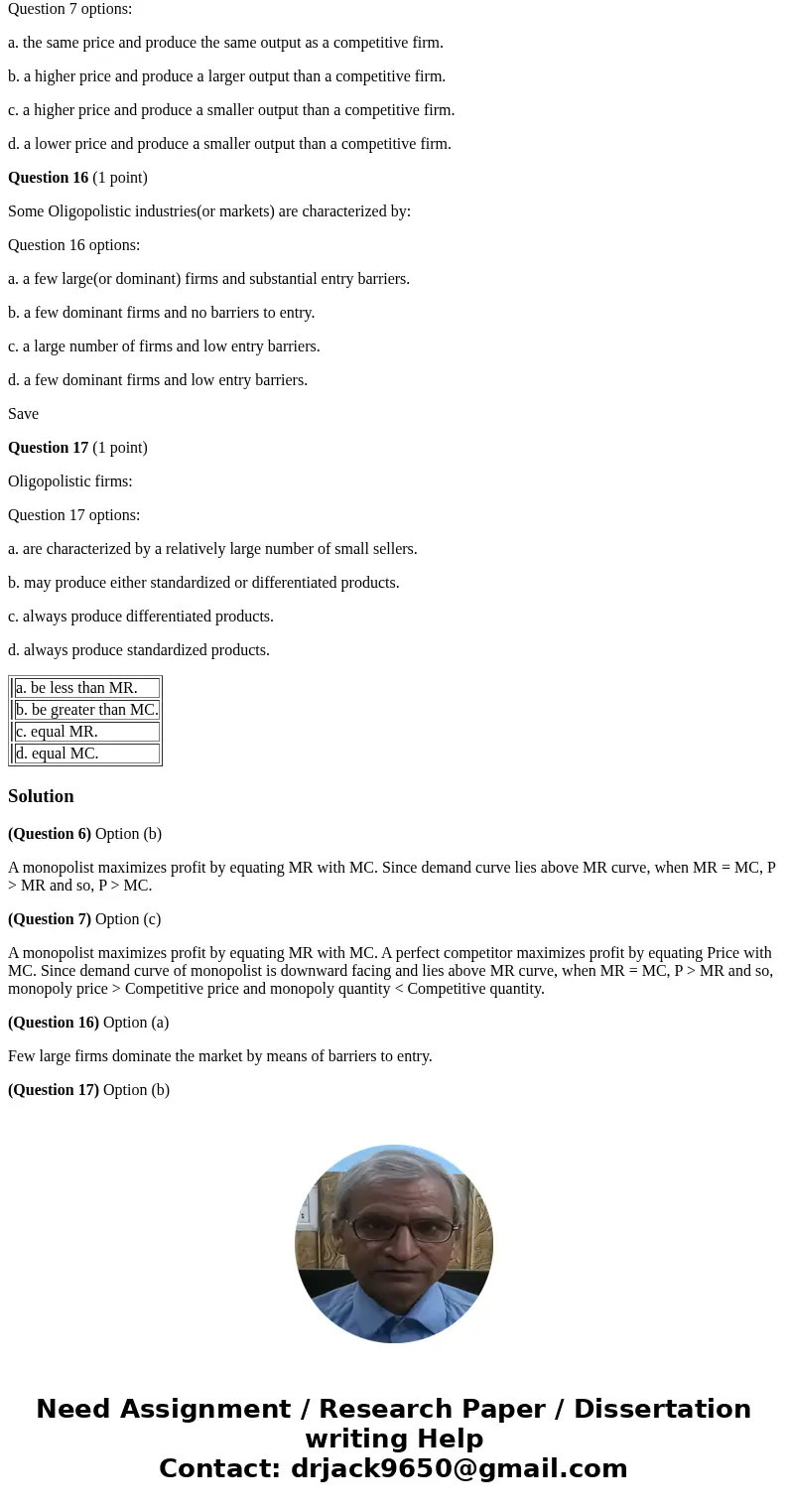Question 6 1 point When a pure monopolist is in equilibrium
Question 6 (1 point)
When a pure monopolist is in equilibrium, price(P) will:
Question 6 options:
a. be less than MR.
b. be greater than MC.
c. equal MR.
d. equal MC.
Save
Question 7 (1 point)
Given the same unit cost data, a monopolistic producer will charge:
Question 7 options:
a. the same price and produce the same output as a competitive firm.
b. a higher price and produce a larger output than a competitive firm.
c. a higher price and produce a smaller output than a competitive firm.
d. a lower price and produce a smaller output than a competitive firm.
Question 16 (1 point)
Some Oligopolistic industries(or markets) are characterized by:
Question 16 options:
a. a few large(or dominant) firms and substantial entry barriers.
b. a few dominant firms and no barriers to entry.
c. a large number of firms and low entry barriers.
d. a few dominant firms and low entry barriers.
Save
Question 17 (1 point)
Oligopolistic firms:
Question 17 options:
a. are characterized by a relatively large number of small sellers.
b. may produce either standardized or differentiated products.
c. always produce differentiated products.
d. always produce standardized products.
| a. be less than MR. | |
| b. be greater than MC. | |
| c. equal MR. | |
| d. equal MC. |
Solution
(Question 6) Option (b)
A monopolist maximizes profit by equating MR with MC. Since demand curve lies above MR curve, when MR = MC, P > MR and so, P > MC.
(Question 7) Option (c)
A monopolist maximizes profit by equating MR with MC. A perfect competitor maximizes profit by equating Price with MC. Since demand curve of monopolist is downward facing and lies above MR curve, when MR = MC, P > MR and so, monopoly price > Competitive price and monopoly quantity < Competitive quantity.
(Question 16) Option (a)
Few large firms dominate the market by means of barriers to entry.
(Question 17) Option (b)


 Homework Sourse
Homework Sourse